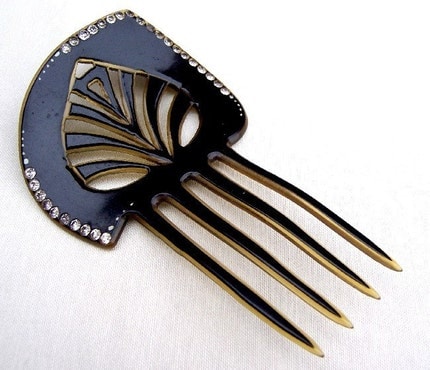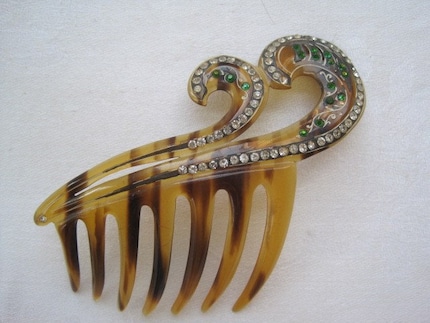The wonderful world of combs

The earliest combs were made of bone, ivory and wood;
silver, brass and tin were used later on, and in the early to mid-19th century, tortoise shell and horn became the common materials for comb making.
The advantage of using tortoise shell and horn was that these materials were soft and moldable when heated and they retained their new shape as they hardened.
The feathers of the Chinese Kingfisher were also used at one point in time for designing the combs.
In the late-19th century, celluloid was developed through the experiments of two brothers, Isaiah and John Hyatt, who used nitro-cellulose and camphor as primary ingredients.
The aim was to find a cheaper alternative to ivory and tortoise shell. Celluloid rapidly grew popular, leading to the formation of a whole new comb industry.
There are numerous examples of celluloid combs - some in museums due to their quality and beauty - other still out there within the reach of the vintage fashion lover.
There is also an Antique Comb Collectors Club funded not very long ago, in 1993, and contributing to further research in the comb's history.
Check out the Etsy examples bellow:












